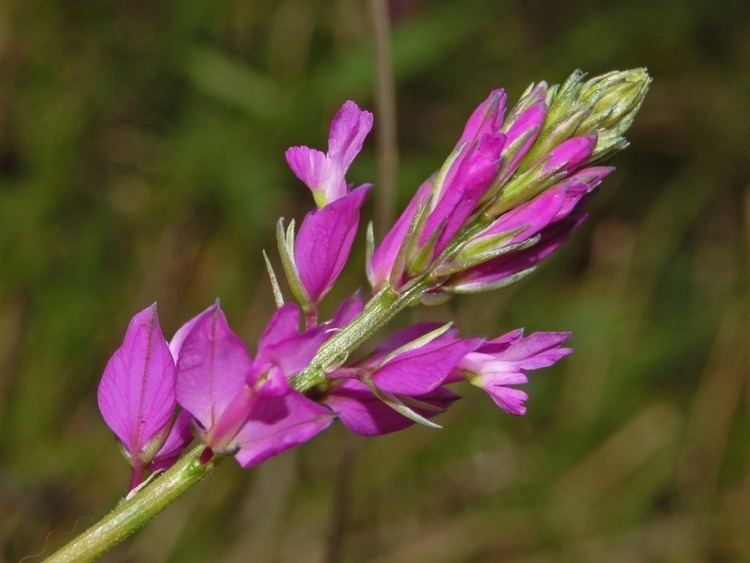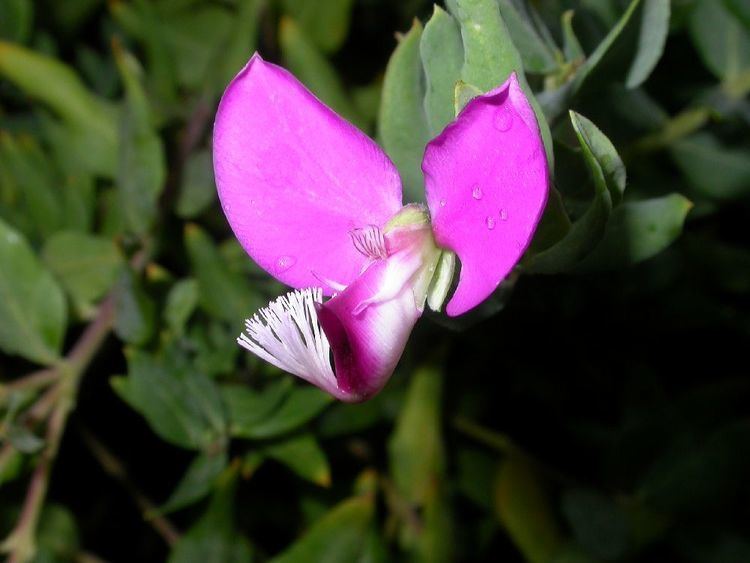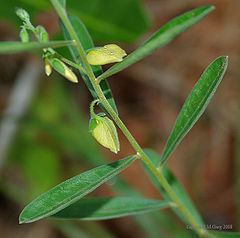Scientific name Polygalaceae Rank Family | ||
 | ||
Lower classifications | ||
The Polygalaceae or the milkwort family are made up of flowering plants in the order Fabales. They have a near-cosmopolitan range, with about 21 genera and ca. 900 known species of herbs, shrubs and trees. Over half of the species are in one genus, Polygala, the milkworts.
Contents

Under the Cronquist classification system, Polygalaceae were treated in a separate order of their own, Polygalales. Currently, according to the APG, the family belongs in Fabales.

Tribes and Genera
The Polygalaceae comprises the following genera:
Carpolobieae
Moutabeae
Polygaleae

Xanthophylleae
Fossils
Systematics
Modern molecular phylogenetics suggest the following relationships:

References
Polygalaceae Wikipedia(Text) CC BY-SA
